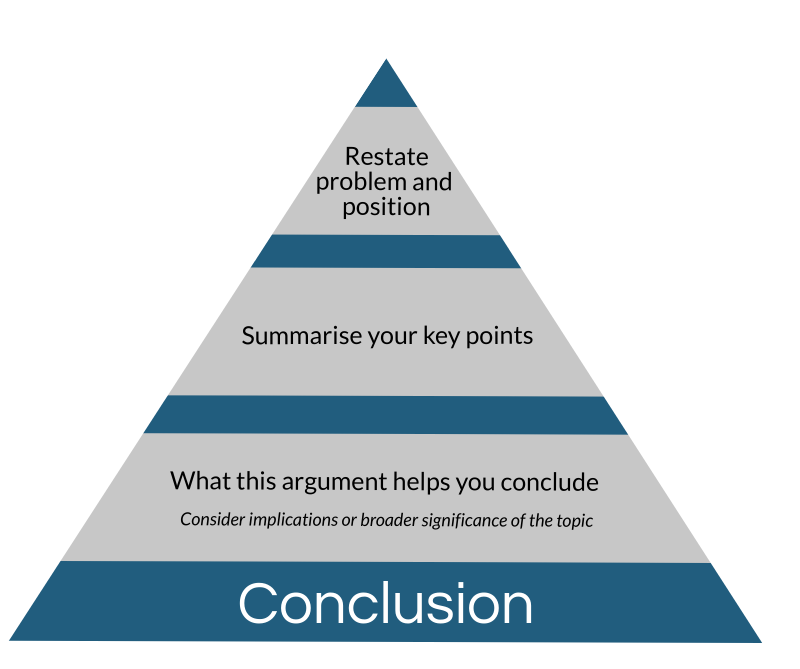In writing a conclusion, it’s important to avoid cliches, which are phrases that repeat what you’ve already said in the body of your essay. A good conclusion sentence does not simply reiterate what you said in the body of your essay, it builds on your main idea. Here are some guidelines:
Avoid repeating what you’ve already said in your introduction
An effective conclusion should restate the most important points in the essay while summarizing your argument. Your reader should walk away from your writing with an overview of the entire essay. It should tie back to the introduction somehow, such as your thesis statement, similar concepts, or a story. A poorly-written conclusion will leave readers feeling like they’ve read a waste of time.
When writing a conclusion, it is best to restate and reinforce the central ideas of the essay. This will show the cohesiveness of your ideas and give readers something to think about. You can also talk about broader implications. Don’t repeat what you’ve said in your introduction – it’s redundant. Instead, you should give the reader something to think about.
Avoid cliche conclusion sentence starters
Using conclusion sentence starters is a great way to end an essay. They signal to your readers that the writing is about to come to an end and give them a sense of closure. The best conclusion sentence starters will be concise and make readers aware of what’s to come. Listed below are some examples of good conclusion sentence starters for an essay. Make sure to avoid using cliches.
A common mistake students make when writing a conclusion is using a common phrase. While it may sound nice, it’s best to avoid using overused phrases when writing a conclusion. For example, don’t mention your thesis statement at the end of the essay, and don’t repeat the same arguments you’ve already made in the body. This could make the reader feel as though they’re being lectured. Instead, include the evidence and arguments from the body of the essay in the conclusion.
Including a quote
How to include a quote in a concluding paragraph of an essay? Firstly, think about the source of the quote. What is the main theme of the quote? You might also want to consider how the quote is received in a broader context. When citing a famous quotation, you should consider how it relates to the theme of the essay and the personality of the author.
A good conclusion paragraph should leave the reader wondering about what’s coming next. It should pose a thought-provoking question or state a striking quotation from your research. While a good quote can illustrate the central idea of the paper, it’s better if it reinforces the central point of the paper. For example, a quote from Virginia Woolf’s essay may have broader implications for feminists in the future.
Compound or parallel in structure
If you’re attempting to compose a good conclusion for your essay, you should consider the following things: Keep it short, direct, and parallel in structure. Parallel sentences have a sense of balance while compound sentences establish order and balance. Both are effective for closing an essay. A good conclusion should include a statement that ties everything together. This sentence should not include new ideas or opinions; such language only serves to make the paper sound stiff and unnatural.
To determine whether a sentence is parallel in structure, you can examine its infinitive clause. It should track the plurality of words in the sentence. If the first word is plural, so should the following one. Verbs should remain unchanged in form throughout the paragraph. The following two sentences are examples of parallelism. For best results, use a combination of both. Remember to use a parallel structure whenever possible.

